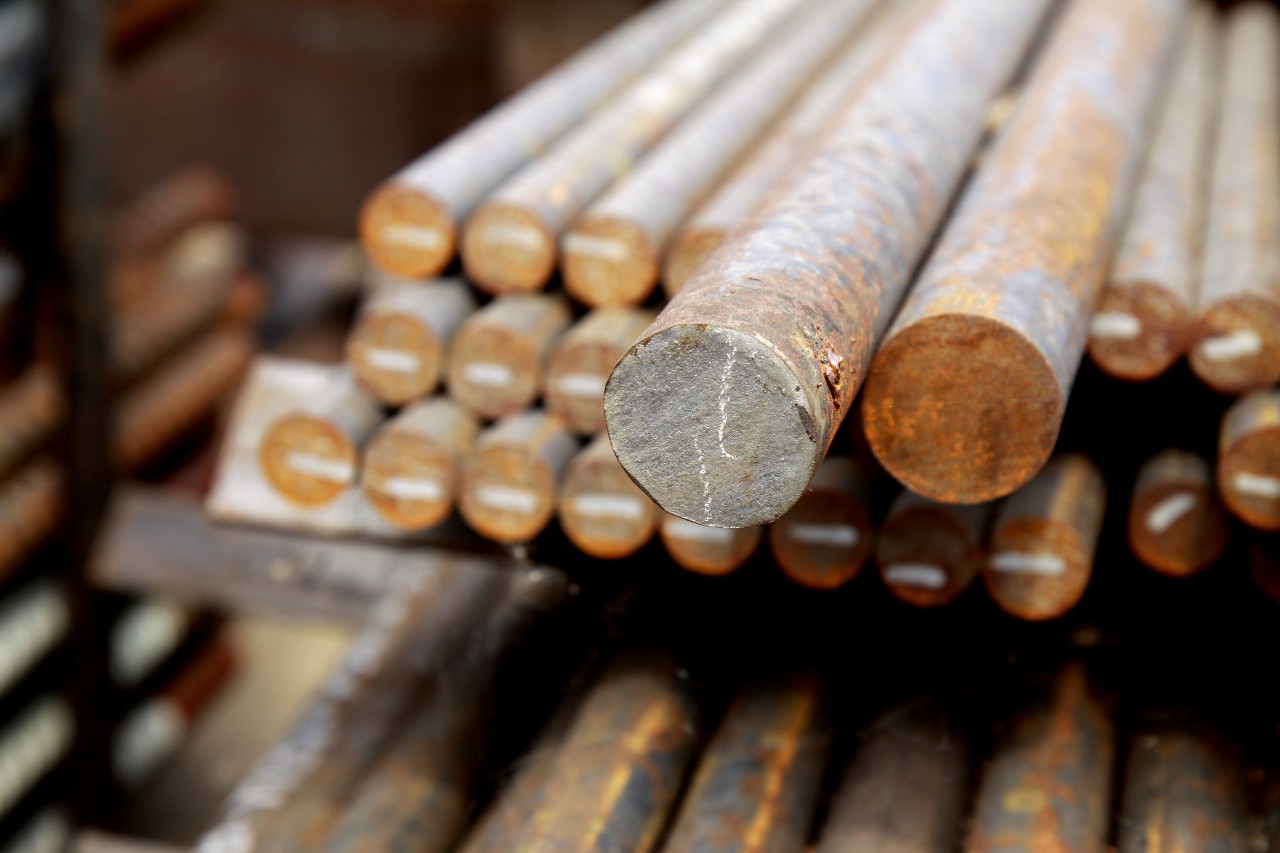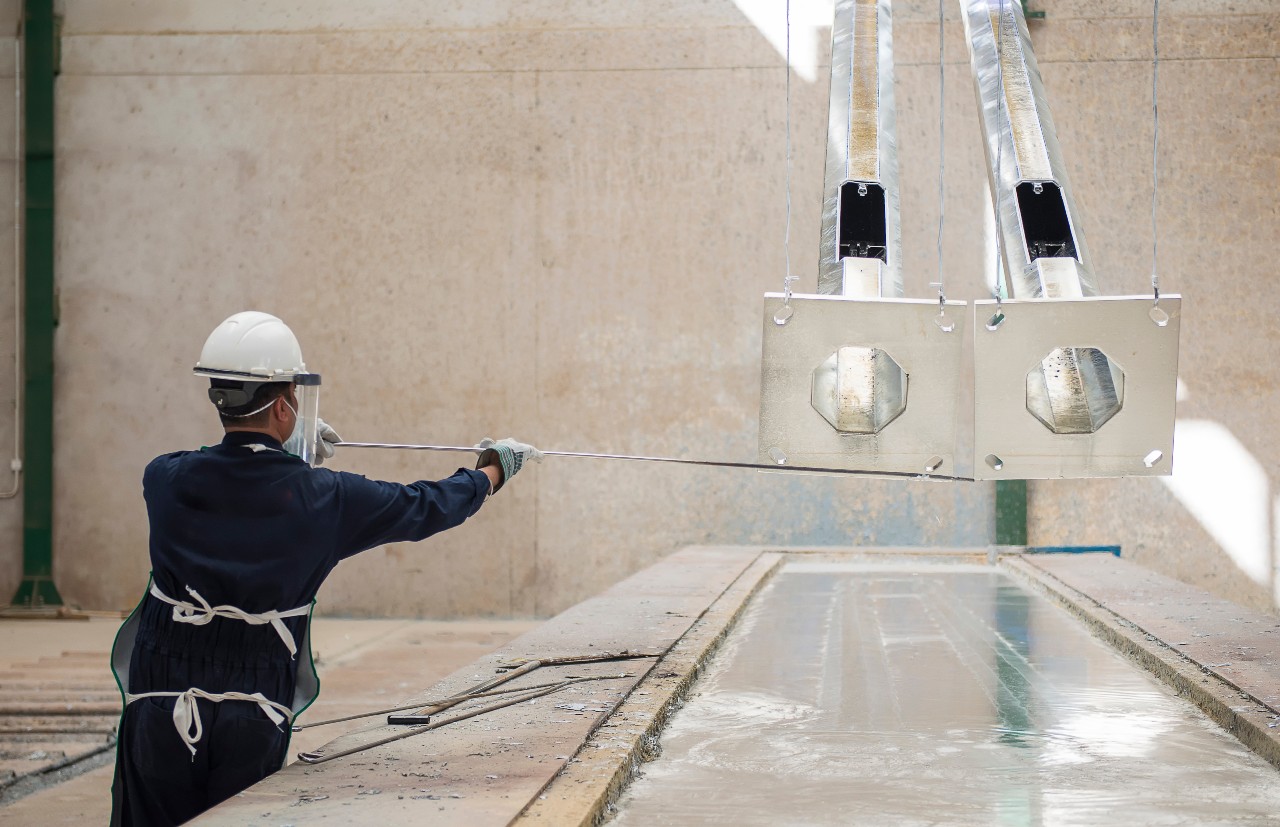Steel corrosion: treatments to prevent it
All you need to know about steel corrosion and methods to prevent it
Steel, known for its strength and versatility, is one of the most used materials in modern industry. It is used in a wide range of applications ranging from metal carpentry to architectural structures, infrastructure and vehicle components. Despite its high strength, steel is subject to corrosion, a natural process that causes the metal to deteriorate due to chemical reactions with the environment.
Corrosion can not only compromise the aesthetics of the material, but also significantly reduce its strength and durability, weakening the load-bearing capacity of structures and causing their gradual deterioration.
Preventing corrosion is therefore crucial to ensure the safety and reliability of steel structures and components. By adopting appropriate treatments and advanced technologies, it is possible to protect the steel effectively, extending its useful life and reducing long-term maintenance costs.
Let’s see in more detail what are the causes of steel corrosion and the treatments useful to prevent it.
Causes and effects of steel corrosion

As we have seen, corrosion of steel is a chemical phenomenon that leads to the deterioration of metal due to interaction with the surrounding environment. This natural process occurs when steel comes into contact with corrosive agents such as oxygen, water, salts, acids and other chemical elements present in the atmosphere or in aqueous solutions. Corrosion can manifest itself in different forms, but the most common is the formation of rust, which appears as a reddish patina on the metal surface, compromising the aesthetic appearance of steel but also mechanical strength and durability.
The causes of steel corrosion are many and can be influenced by different environmental variables. The main causes are certainly temperature changes, which can cause material expansion and contraction. The process of corrosion is not only a matter of time but also of time. The type of alloy used in steel can also affect this: some alloys are more resistant to corrosion than others, depending on their chemical components.
Other possible causes of steel corrosion are contact with liquids and the presence of chlorides, which can accelerate the corrosive process by creating favorable conditions for electrochemical reactions.
Generally the corrosion process occurs mainly:
- in dry environments, where corrosion is mainly caused by chemical reaction with oxidizing gases in the atmosphere, such as oxygen. In this case, the metal tends to restore its oxidized form, which is the most stable form in nature, by combining with oxygen or other gases. This is referred to as dry corrosion in this case;
- in wet environments, where corrosion occurs instead in the presence of liquids that act as conductors, facilitating electrochemical reactions. For example, steel can oxidize when immersed in water, especially if it is in contact with another metal that has a different electrical potential. The potential difference between the two metals generates an electric current that accelerates the corrosion of steel. In this case, the corrosion is called “wet” corrosion.
Main types of corrosion
Steel corrosion can occur in different forms, each with specific characteristics and causes. Knowing the main types of corrosion and why they occur is critical to taking the appropriate preventive measures and ensuring the longevity and safety of steel structures. The most common types of corrosion include:
- uniform corrosion, which evenly affects the entire surface of the metal. It is one of the most common forms of corrosion and can be caused by a variety of weathering agents such as moisture, chlorides, and pollutants. The electrical conductivity and pH of the soil or water with which the metal comes in contact can also influence the extent of corrosion. This type of corrosion is particularly insidious because, if left unchecked, it can significantly reduce the thickness of the metal, compromising its structural strength over time;
- pitting: it is a type of localized corrosion that primarily affects (low-grade) stainless steel. Unlike uniform corrosion, which spreads over the entire surface, pitting causes small holes or cavities that penetrate deep into the metal. These holes can significantly weaken the material, increasing the risk of fracture and failure. Pitting is often caused by the presence of chlorides in wet environments;
- crevice corrosion: this type of corrosion occurs in particularly delicate areas of the metal surface and often affects joint points, gaskets, and other small crevices. Crevice corrosion occurs because these spaces can retain moisture and other corrosive substances, creating a favorable environment for corrosion. It is usually difficult to detect and can lead to serious structural problems if not identified and treated promptly;
- intergranular corrosion: usually occurs along the edges of the metal’s crystalline grains, often due to inadequate heat treatments or errors in welding processes. When steel is exposed to certain temperatures for an extended period, the percentage of chromium in the metal can fall below a certain threshold, compromising its stainlessness. This type of corrosion is particularly problematic because it can weaken the internal structure of metal without showing obvious signs on the surface;
- galvanic corrosion: it occurs when two different metals, with different electrical potentials, come into contact in a humid environment. In this situation, the metal with the lower electrical potential acts as the anode and corrodes more rapidly, while the metal with the higher potential acts as the cathode and is preserved. To avoid galvanic corrosion, it is essential to isolate dissimilar metals with non-conductive materials;
- stress corrosion: mechanical stresses can also cause corrosion in steel. When metal is subjected to large stresses or strains, corrosion can develop and propagate along the areas of greatest stress. This type of corrosion can be prevented by using appropriate materials and taking preventive measures that minimize stresses on the metal.
How to avoid steel corrosion
Preventing corrosion of steel is critical to ensuring the durability and safety of metal structures and welded products. There are various methods and preventive treatments that can be adopted to counteract the tendency to oxidation and protect steel from corrosion. One of the most popular methods is the application of protective coatings. Among these, galvanizing and painting are among the most effective and commonly used.
Galvanizing is the coating of steel with a zinc layer and is one of the most popular methods for protecting metals. This process can be performed in several ways, including hot-dip galvanizing and electrolytic galvanizing. Hot-dip galvanizing involves the immersion of steel in a bath of molten zinc, at a temperature of approximately 450°C. This treatment creates a thick and durable layer of zinc that protects the underlying steel from corrosion. The main advantage of hot-dip galvanizing is that the zinc layer can protect the steel even in case of scratches or surface damage. Electrolytic galvanizing, on the other hand, uses an electrochemical process to deposit a thin layer of zinc on steel. Although this layer is generally thinner than hot dip galvanizing, it still offers good corrosion protection and a smoother, more uniform surface finish.
Painting, on the other hand, involves applying one or more layers of paint to the surface of the steel. The paint acts as a physical barrier that insulates the metal from external corrosive agents such as water, oxygen and salts. There are several types of anticorrosive paints, each with specific characteristics to withstand different environmental conditions. Surface preparation is a crucial step in painting: the steel must be thoroughly cleaned to remove rust, grease and other impurities, such as by sandblasting or pickling, to ensure good paint adhesion. After preparation, a primer, which provides initial protection and promotes adhesion of subsequent layers, and one or more coats of final paint, which provide the ultimate corrosion protection and desired aesthetic appearance, are applied.
Cathodic protection is another widely used technique to prevent corrosion, especially in underground or water-immersed structures. This technique involves the use of sacrificial anodes or the application of an external electric current to reduce the tendency of steel to corrode. Sacrificial anodes, made from more reactive metals such as magnesium or zinc, will corrode instead of steel, providing effective protection.
Obviously, in order to prolong the life of steelwork and steel structures, it is essential to start with good design and the adoption of preventive measures, which must also be evaluated according to the type of use of the steel structures or components and the environmental and operating conditions. Avoiding the creation of crevices and areas where moisture can stagnate is critical, as is ensuring adequate ventilation and drainage to prevent water accumulation. Choosing appropriate fastening materials, such as stainless steel bolts and screws, can also prevent crevice corrosion.
Regular maintenance and periodic inspections are also essential to detect and address early signs of corrosion. Regularly cleaning steel surfaces to remove contaminants and applying new layers of protective coating when needed can help keep steel in good condition and reduce the risk of corrosion.
Steel coatings and surface treatments: the services offered by Ferrero Industrial

Ferrero Industrial specializes in the design and manufacture of industrial carpentry and precision metal components, offering advanced solutions for a variety of sectors – from aerial work platform equipment to drilling machines components, as well as components for telehandlers, industrial vehicles and car transporters.
Using state-of-the-art technologies and a team of highly skilled experts, the company is able to perform high-quality protective treatments and coatings for steel, such as hot-dip galvanizing, painting (liquid or powder) and special corrosion-resistant finishes.
These treatments not only increase the metal’s resistance to oxidation, prolonging its life, but also improve the aesthetic appearance of surfaces, offering a wide choice of colors and finishes.
In addition to protective coatings, Ferrero Industrial can carry out specific surface treatments to improve the mechanical properties of steel. Thanks to these processes, it is possible to increase the hardness, wear and stress resistance of components, making them suitable even for particularly harsh working environments and uses.
The various processes and treatments offered also include sandblasting and cataphoresis painting processes, which allows increasing the corrosion resistance of steel, effectively protecting components and structures from atmospheric agents or under conditions of exposure to chemicals and moisture. Ferrero Industrial stands out for its ability to customize treatments according to specific customer needs, offering tailor-made solutions for all types of applications, from industrial to transportation.
Our specialized technicians work alongside customers at all stages of the project, from “simultaneous engineering” to the development of the finished product, proposing innovative solutions of the highest quality.
For more information on surface treatments or other services offered by Ferrero Industrial, contact us!




